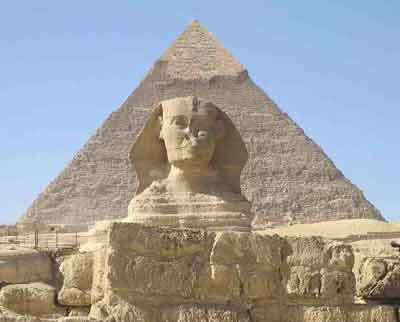Ancient Egypt Pyramids
|
The Great Pyramids of Egypt have always been considered as one of the most enduring symbols representing the architectural excellence of ancient Egyptian civilization.
|
According to beliefs of ancient Egyptians, whenever a Pharaoh dies, he becomes the King of the dead or Osiris. They consider that some part of the dead Pharaoh’s spirit remains attached to his corpse. It is important to take care of the dead Pharaoh’s spirit, or else a disaster would strike Egypt. Pyramids were massive tombs constructed with the objective of safeguarding the dead remains of a Pharaoh.
Bodies of the Pharaohs were mummified and buried in these tombs along with all the essentials that the king might require in his afterlife including vessels, furniture, food, and gold. The conical shape of pyramids built by ancient Egyptians represented the BenBen, a sacred and pointed stone that symbolized the descending rays of the Sun and from which Egyptians believed that the Earth was created. Ancient Egyptians believed that the pyramid represented a stairway for the king to ascend to the heavens.
Currently, there are around 110 pyramids found in Egypt. Most of these pyramids are believed to have been constructed during the Old and Middle Kingdom periods. Earliest among these is the Step Pyramid of King Djoser that was built during the 3rd Dynasty of Old Kingdom. Made out of limestone, Step pyramid is the first known monumental structure made out of stone anywhere in the world. Other important ones that symbolize the sequential evolution of pyramid construction methodology during ancient Egyptian period include the Maidum Pyramid, Bent Pyramid, Red Pyramid, and Great Pyramid at Giza, Pyramid of Khafre, Pyramid of Menkaure and the Pyramid of Pepi II. The Red pyramid built for King Sneferu during the 4th dynasty of the Old Kingdom symbolizes the first true pyramid constructed by ancient Egyptians.

|
